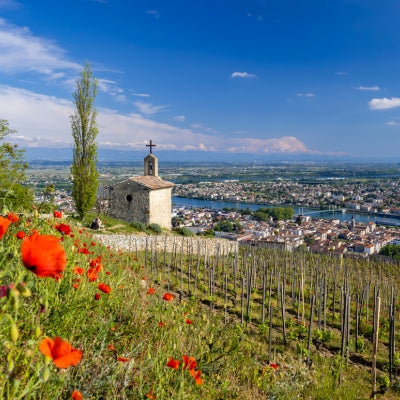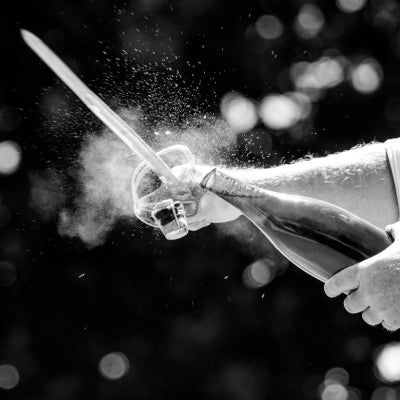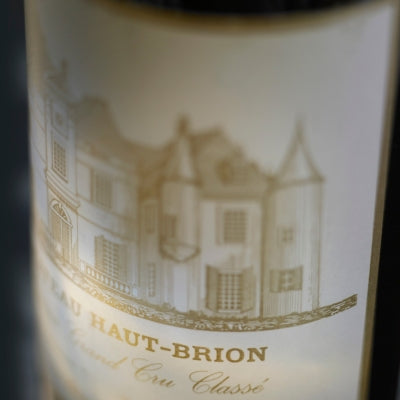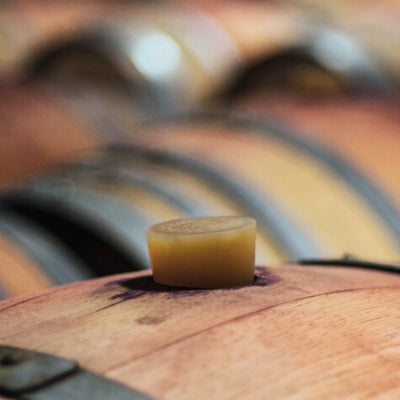
Northern Rhône Know-How
We speak of the Rhône Valley as if it were one entity, and yet the Northern and Southern Rhône vary wildly, aside from both being situated along the Rhône River, an being the subjected (in varying levels) to the mighty Mistral. The Mistral is a brutal yet beneficial wind blowing north to south that sweeps through the Rhône Valley and their southern neighbor Provence. It can be damaging sheerly for its force battering the vines. On the other hand, a mighty wind can help clear pollution and disease from the air.Aside from the river and the wind, the differing temperatures, soils, vine-training and grapes grown create wines that beautifully exhibit the differences betwixt north and south.
We’ll begin this with the Northern Rhône, where Syrah holds sway, ballasted by a few white varieties: Viognier, Marsanne, and Roussanne, who shine both as additions to red wines and also on their own. As a rule of thumb, the Syrah will be what we might call “big”—full of body, firm in tannins, and flavor-rich veering towards the savory. Roasted meat, herbs, black olives, pepper and hints of purple flowers are all classic tasting notes on Northern Rhône Syrah.
The climate is continental, with cold winters and warm summers. Some of the best vines are planted on south facing slopes to benefit from sunlight. Top sites are oft on these hills in valleys that lie perpendicular to the river, adding the benefit of protection from the Mistral. Still, particularly in the Côte Rôtie, the vines are trained to withstand the wind. Typically planted in “echalas” a type of training where the vines are fashioned in a sort of a teepee around a single stake. Granitic soil prevails here, perhaps spurring the wines to acquire refreshingly high acid.
The most important subregions for those who buy fine wine are the Côte Rôtie, Condrieu (with its subregion monopole of Château Grillet), Hermitage and Cornas. Also found in the Northern Rhone are Crozes-Hermitage, St. Joseph and St. Peray, but we will focus on the first four areas.
Côte Rôtie is farthest north, and most subject to the Mistral madness. However, the region’s name translates to “roasted slope”, and indeed the best vines get the ripening warmth of the sun, which alternates with the cool nights borne of altitude, creating some of the most compelling, complex, and balanced wines of all. The wine is all red and based on Syrah. Up to 20% Viognier is allowed, typically co-fermented with Syrah to add lightness and floral verve, albeit this is a waning trend. Within the region there are two slopes named for daughters: Côte Brune (the brunette! Responsible for sturdier in tannins and structured wines) and Côte Blonde (associated with more elegantly spry wines).
E. Guigal was a trendsetting winemaker in Côte Rôtie, what with his single vineyard wines the “lalas”: La Landonne, La Turque and La Mouline. The wines broke tradition, being aged in new oak. Guigal’s innovation, much beloved by Robert Parker helped throw the Côte Rôtie into the spotlight. Clusel-Roch, Vidal-Fleury, Domaine Jamet, Chapoutier, Ogier, and more are now all producing top-notch wines in the region.
South of Côte Rôtie we come to Condrieu, home of Viognier wines. Within the appellation is the monopole of Château Grillet, which benefits from vineyards that are housed in a natural amphitheater with its “arzelle” soil, made of decomposed mica that radiates the heat Viognier craves, creating the full, unctuous (without being cloying), spiced, honeysuckled, and exciting white wines of the area.
And now we come to one of the best known of the region: Hermitage. Hermitage is named for the legend of the soldier who needed a spot of peace—and who wouldn’t? The Crusades were no picnic. The land is essentially one big south-facing hill, yet within it are several lieux-dits to look out for, in particular Le Méal, whose warmer temperature and lighter-colored soils lead to fuller, riper reds. The biggest of the lieux-dits is Les Bessards with its highly granitic soil and mineral-driven wines.
Do not miss out on the white wines of Hermitage. In particular look to the lieux-dit of L’Hermite whose blend of soils is known for wines lighter on their toes. The whites of the region are typically blends of Marsanne and Roussanne, known to make dense yet bright, spiced, and interestingly enough refreshingly herbal wines that will haunt you until you can procure another bottle.
Chave is the penultimate producer of Hermitage, commanding respect for all his wines but especially the Cuvée Cathelin, which is not made every year. Chapoutier, Guigal and Delas are also producers of note, all aforementioned for making wines in the Côte Rôtie, but doing fine work in Hermitage to boot. Paul Jaboulet Aine equally excels, known for his La Méal based “La Chapelle” bottling.
Cornas is the one sub-region in the Northern Rhône to be restricted to one red variety: Syrah. It is more southerly, and with the latitude’s accompanying heat, the wines are thick, ripe, dark and tannic with sometimes astonishing complexity of aroma and flavor.
The most known of all producers in Cornas is of course Domaine Clape. Auguste, his son Olivier now runs the show. Auguste was the first to bottle his own wine—before him most winegrowers sold to negociants. Known as the “mayor of Cornas”, Auguste espoused no particular philosophy but listened to his vines—and what wise vines they are, being old ones. The Domaine continues to make complex and enchanting wines. Clape set the stage for other independent producers like Thierry Allemand, one of the original organic farmers in Cornas.
Hopefully you are inspired to take a virtual tour of the Northern Rhône now! In the next column we will explore the wines of the Southern Rhône.



